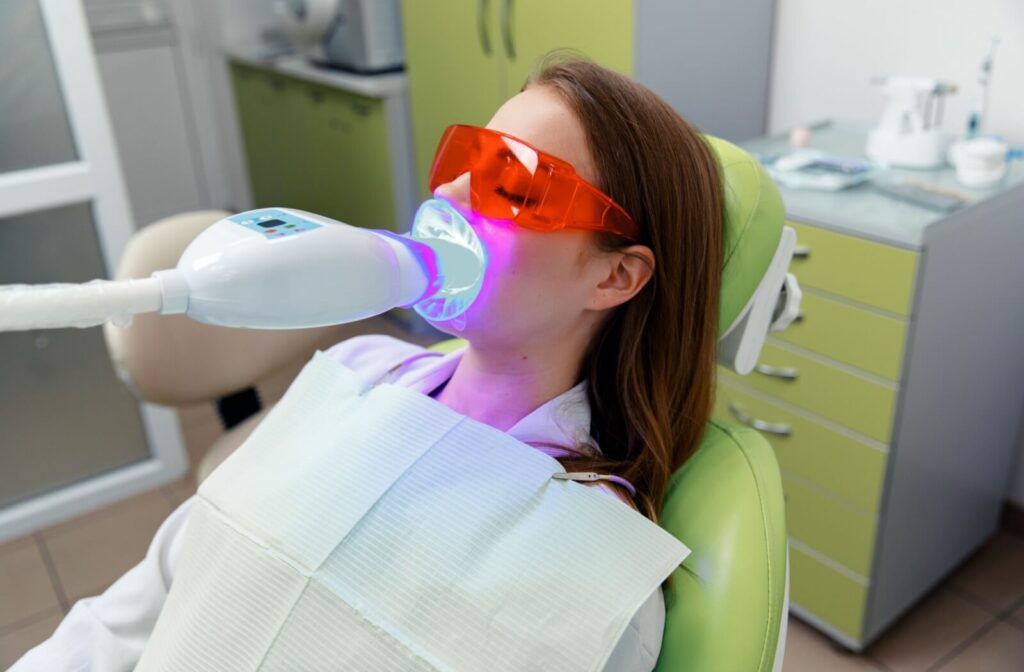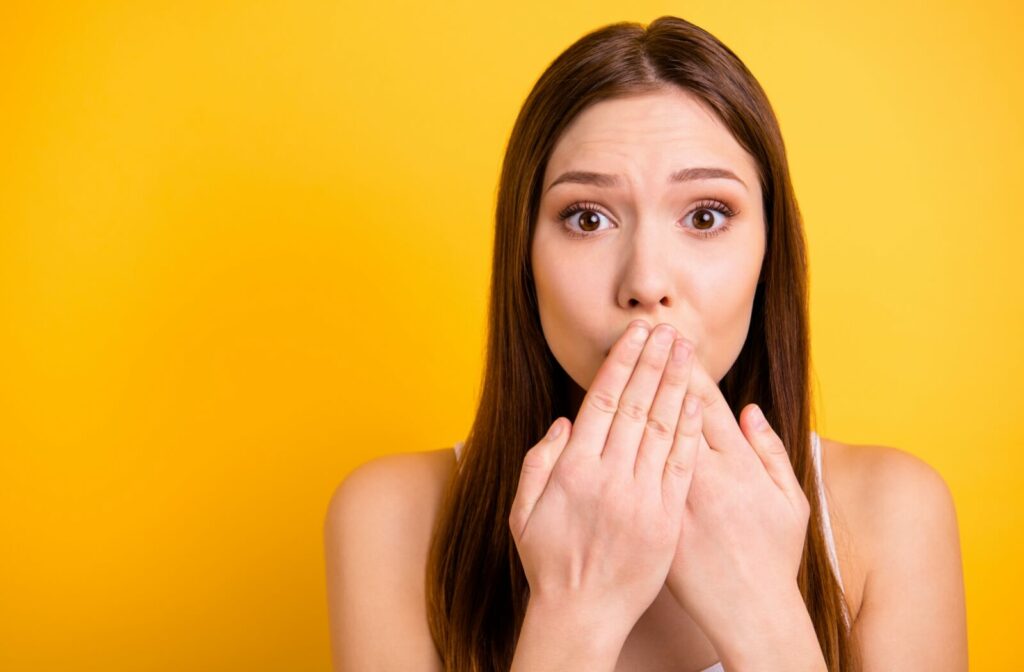When it comes to maintaining a healthy, radiant smile, brushing and flossing daily are essential habits. They keep your teeth and gums clean by removing particles and plaque that can lead to cavities, gum disease, and other dental concerns.
But what if you’re brushing and flossing diligently and your teeth still look yellow? Don’t worry—you’re not alone! Here’s the thing: brushing is fantastic for oral hygiene, but it’s not intended to be a whitening technique. Teeth naturally have a yellowish hue, and they may become more discoloured over time due to various factors.
Our Teeth Are Naturally Yellow
Believe it or not, teeth are not naturally pure white. Their structure determines their colour. The visible part of a tooth consists of two main layers:
Enamel
Enamel is the hard, outermost layer of a tooth. While it’s a strong protector of the more sensitive components inside your teeth, it’s not perfectly white. Enamel is semi-translucent and lets the colour of the layer beneath it show through.
Dentin
The dentin is the layer just beneath the enamel. It can range in colour from pale yellow to greyish to even orange hues. The colour of your dentin can unusually be seen faintly through the enamel. The thinner or more worn your enamel is, the more this yellowish tone becomes visible.
This means even with perfect brushing and flossing, a slight yellow tone in your teeth is completely normal! However, there are factors that can make your smile appear more discoloured over time.
Cleaning vs. Whitening: Knowing the Difference
Teeth Cleaning
Brushing and flossing are essential for maintaining good oral hygiene. They clean your teeth by removing plaque, food particles, and bacteria that can lead to decay. While this helps keep your teeth healthy, brushing alone can’t remove deeper stains or alter the natural colour of your teeth. This also applies to professional dental cleanings, which focus on removing plaque and tartar buildup for a healthier mouth—not whitening your teeth.
Conversely, toothpaste designed for whitening can help minimize surface staining. However, while these products can brighten your teeth slightly, they’re not as effective as targeted whitening treatments for deeper discolouration.
Teeth Whitening
For noticeable results, teeth whitening treatments are the way to go. Professional whitening treatments can brighten your teeth by lifting stains and discolouration from the enamel using concentrated whitening agents. These cosmetic procedures are specifically designed to leave your teeth looking several shades lighter.
What Causes Tooth Discolouration?
Even though teeth are naturally yellowish, there are several reasons why discolouration becomes more prominent over time. Here are some of the common culprits:
Aging
As you age, the enamel on your teeth naturally becomes thinner due to wear and tear. This makes the yellowish dentin beneath more visible, causing your teeth to look more discoloured.
Diet
What you eat and drink can also play a role in the colour of your teeth. Foods and beverages like coffee, tea, red wine, and dark-coloured fruits can leave stains on your enamel. Acidic foods can also wear down the enamel, making teeth more susceptible to discolouration.
Lifestyle Habits
Smoking, vaping, and using tobacco products are well-known causes of tooth discolouration. Over time, these habits can leave stubborn stains on your enamel, leading to a darker appearance and compromising oral health.
Intrinsic vs. Extrinsic Stains
Tooth discolouration can generally be categorized into two types:
- Intrinsic Stains: These occur within the tooth, often affecting the dentin. They can be caused by factors like oral injuries, excessive fluoride intake, or medications (e.g., tetracycline). Intrinsic stains are more challenging to treat with over-the-counter methods and often require professional intervention.
- Extrinsic Stains: These affect the surface of the enamel and are caused by things like food, drinks, and smoking. Fortunately, extrinsic stains typically respond well to whitening treatments.
How Can I Whiten My Teeth?
If you’re looking to brighten your smile, there are two main options for teeth whitening treatments:
At-Home Teeth Whitening
At-home remedies can gradually whiten your teeth and improve mild discolouration. Here are some common at-home methods:
- Whitening Toothpaste: These toothpastes can remove surface stains, but won’t be effective for deeper discolouration.
- Baking Soda: A natural abrasive, baking soda can help remove stains while also neutralizing bacteria and plaque buildup. However, be cautious not to overuse it, as it can wear down enamel over time.
- Whitening Strips: These are an affordable option for noticeable but gradual results. They typically contain peroxide-based gels.
At-home solutions are convenient, but they don’t offer the dramatic results or lasting impact of professional treatments.
Professional Teeth Whitening

Professional teeth whitening treatments, performed by your dental team, offer the quickest and most effective results. Here’s what you can expect:
- Your dentist will clean your teeth and check for any underlying oral health concerns before starting the whitening process.
- A high-concentration peroxide gel will be applied to your teeth, sometimes enhanced with an LED light to accelerate results.
- Treatments typically take about an hour, and results are often visible immediately.
With proper care, professional whitening results can last from 6 months to 3 years. These treatments are particularly effective for extrinsic stains, although your dentist may recommend other solutions for intrinsic discolouration.
Keep Your Smile Bright
Teeth whitening treatments can produce stunning results, but maintaining those results requires some care:
- Avoid foods and drinks that stain teeth, especially in the days immediately after a whitening treatment.
- Follow a diligent oral hygiene routine that includes brushing, flossing, and regular dental cleanings.
- For ongoing maintenance, ask your dentist if at home touch-up treatments are recommended.
Brighten Your Smile
If you’re brushing and flossing regularly but still bothered by yellow teeth, it may be time to explore teeth whitening options. At Shin Dentistry, we offer professional whitening treatments that can help remove stains and give you the radiant smile you deserve.
Don’t settle for a smile that doesn’t make you feel your best. Contact us today to schedule your consultation!



